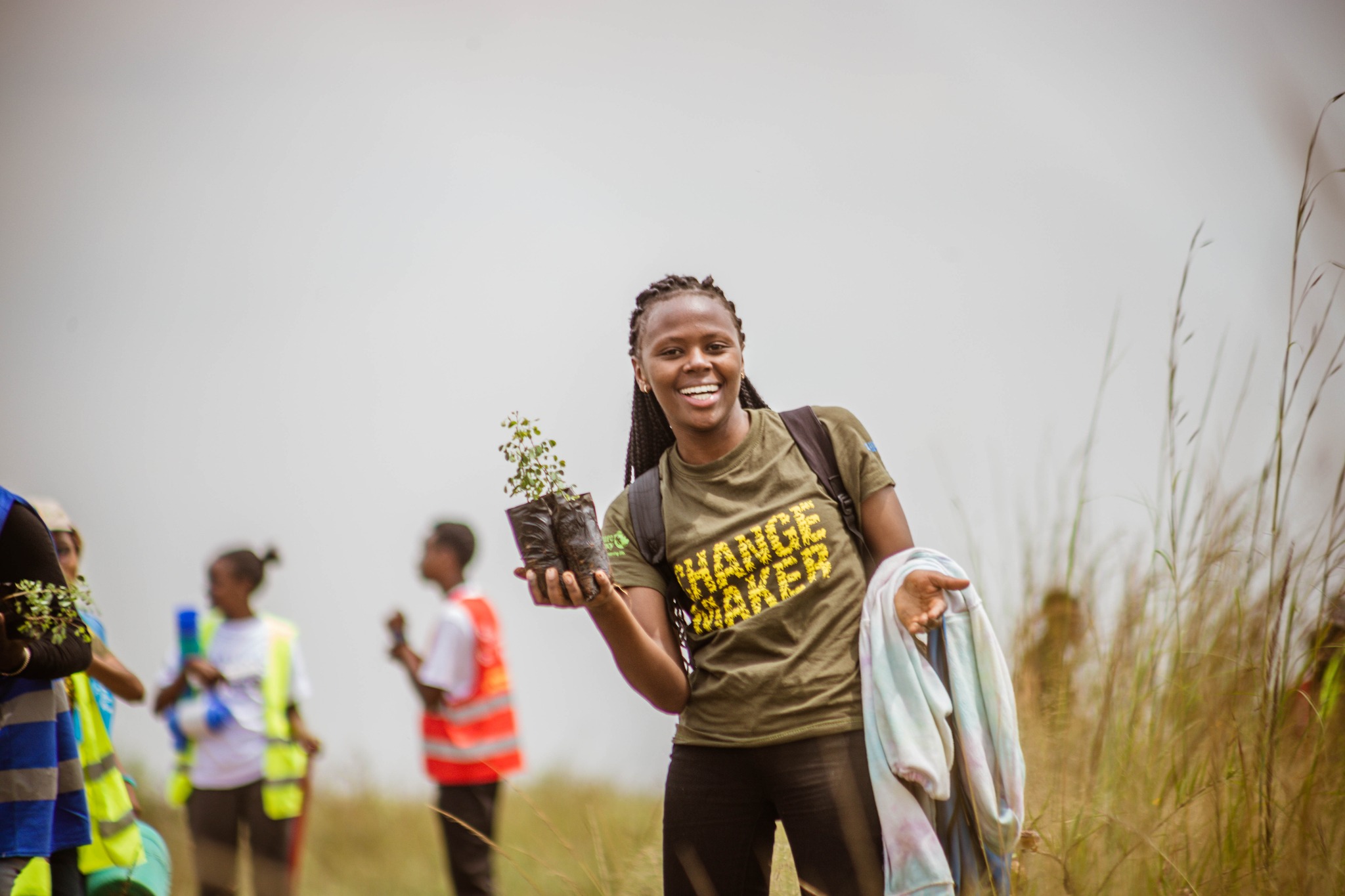The Draft Forest Conservation & Management (Amendment) Bill, 2025
This Bill proposes key amendments to the Forest Conservation and Management Act, 2016, aiming to strengthen forest governance, conservation efforts, and institutional frameworks.
Why the Amendment?
The Bill seeks to address emerging challenges in forest management, as outlined in the National Forest Policy, 2023. Its objectives include:
- Aligning forest laws with Kenya’s Constitution and global conservation commitments.
- Alignment of institutional matters, including providing for the Kenya
Forestry Research Institute, which handles research and dissemination of the outcomes of the same in
the forest sector. The Institute is currently under the Science, Technology, and Innovation Act, No. 28 of
2013, where it is currently anchored. Streamlining forestry regulations and policies to improve efficiency and sustainability.
Why Your Input Matters
The Draft Forest Conservation & Management (Amendment) Bill, 2025 will determine the future of Kenya’s forests, impacting biodiversity, livelihoods, and climate resilience. This is an opportunity for youth and stakeholders to shape policies that will safeguard our natural resources for generations. Submit your comments and make your voice count!

Review the The Draft Forest Conservation & Management (Amendment) Bill, 2025
We’ve broken the review process into three easy steps:
Step 1:
Understand the Existing Forest Conservation Management Act 2016 Framework
Enacted to implement Article 69 of the Constitution, the Forest Conservation and Management Act, 2016 governs sustainable forest management and conservation.
Key Provisions:
- Establishes the Kenya Forest Service (KFS) and its mandate.
- Defines types of forests (public, private, and community) and their management.
- Introduces community participation and benefit-sharing mechanisms.
- Regulates licensing, trade, enforcement, and penalties for forest-related violations.
Step 2:
Review the proposed amendments in the 2025 Bill
To help you navigate the key revisions, we have provided a comparison table outlining the current provisions and proposed changes in the 2025 Bill
Key Amendments at a Glance:
- Insertion of new section 6A to The Forest Conservation & Management Act of 2016: Provides for a forest professionals’ forum that will
subject members to a self-regulation forum to ensure high standards of practice and ethics. - Introduction of new terms including and updated definition of indigenous forests
- Forest Professionals Forum: Establishes a self-regulation body to ensure ethical forestry practices (Section 6A).
- Decentralization of KFS Services: Mandates devolution of forestry services to counties.
- Enhanced Law Enforcement: Introduces mandatory training and oath-taking for enforcement officers (Section 16).
- A new proposed section (47B) seeking to mandate KFS to implement activities relating to reducing emissions from deforestation and forest degradation and in consultation with other agencies implement forest carbon projects in public forests.
- Stronger Penalties for Violations: Increases fines and jail terms for illegal logging, encroachment, and deforestation.
- The amendment to Section 55 of the principal act broadens its focus from national tree-planting days to include other forestry conservation events. It grants the Cabinet Secretary the responsibility to organize and oversee programs for national and international forest initiatives.
- The bill Establishes the Forest Regulatory Directorate, Forest Law Enforcement Academy, and Kenya Forestry Research Institute.
Step 3:
Review Our Top Line Comments & Provide feedback on specific sections
Your insights are crucial in refining the Draft Bill. Share your thoughts, concerns, and recommendations by:
- Reviewing our Topline Comments on key issues.
- Engaging in discussions on forest conservation and governance.
- Submitting your feedback directly to the Ministry of Forestry & Climate Change.
SUSO BNG Draft Forest Conservation and Management (Amendment) Bill, 2025
Top Line Comments on Key Issues and Concerns
Forest Clearing for Development
Amendment: Amendment of section 56 of No. 34 of 2016
Comments: The amendment to Section 56 of the Forest Conservation and Management Act (No. 34 of 2016) introduces provisions allowing for easements for public roads and other critical public installations and wayleaves for public utilities in public and private forests. This change raises significant concerns, particularly in the context of Kenya's struggle to achieve and maintain the minimum 10% forest cover goal.
Increased Risk of Forest Clearance
Key Concern: Increased Risk of Forest Clearance for Infrastructure Development
The amendment makes it easier for public and private developers to secure authorisation for projects that involve clearing forested land. While public roads and utilities are essential, their expansion into public forests could accelerate deforestation, potentially undermining conservation efforts.
Contradiction with Kenya's Reforestation Goals
Key Concern: Contradiction with Kenya's Reforestation Goals
Kenya has been investing heavily in tree planting initiatives and restoration projects to meet the 10% forest cover. Allowing easements and wayleaves in public forests contradicts these efforts by making forest land more accessible for non-conservation purposes.
Loopholes for Private Exploitation
Key Concern: Loopholes for Private Exploitation
Even though the amendment refers to public roads and utilities, the risk of misuse and encroachment by private developers remains high. Without clear regulatory safeguards, there is potential for infrastructure projects to be used as a pretext for large-scale deforestation.
Impact on Climate Change and Biodiversity
Key Concern: Impact on Climate Change and Biodiversity
Forests play a crucial role in carbon sequestration, water catchment conservation, and biodiversity protection. Unchecked deforestation for infrastructure projects could worsen climate change impacts, disrupt ecosystems, and lead to habitat loss for wildlife.
Carbon Credits Concerns
Amendment: Insertion of new sections to No. 34 of 2016.
Comments: The proposed insertion of Sections 47A and 47B into the Forest Conservation and Management Act introduces a legal framework for forest carbon management, assigning the Kenya Forest Service (KFS) a central role in implementing carbon-related activities. While the inclusion of carbon credit mechanisms is a step toward aligning Kenya with global climate action, the proposal raises several concerns and skepticism, particularly regarding governance, transparency, effectiveness, and equity in the distribution of benefits. Without stringent regulations, local communities and indigenous groups may be sidelined. There is a need for explicit accountability structures to ensure that funds from carbon credits genuinely contribute to forest conservation rather than being diverted for administrative or private gains.
Removal of the Forestry College
Amendment: Replacement of section 17 of No. 34 of 2016.
Comments: The removal of the Forestry College from the amendment raises significant concerns related to forest conservation and the development of future leadership in the sector, especially regarding the training and engagement of youth. For youth, the removal of this institution could diminish employment opportunities and career development in the forestry sector, further deterring the younger generation from pursuing careers that are critical to the future of sustainable forest management. In light to this and the registry of professionals set in the Bill, it brings questions on how and who will be in the registry.
Send a Top Line Comment
Here’s how it works:
- Enter your full official name into the provided box.
- A pre-written petition will open in your email app.
- Review the details and make any edits you deem necessary.
- When you’re ready, send it to ps@forestry.go.ke & secretaryforestry@gmail.com to ensure your voice is heard
Send an Email.
#YOUR VOICE MATTERS
Shape the Future of Public Participation in Kenya Share Your Thoughts and Comments
Join the Discussion! Let’s advocate for a law that prioritizes environmental sustainability while empowering communities and future generations.






